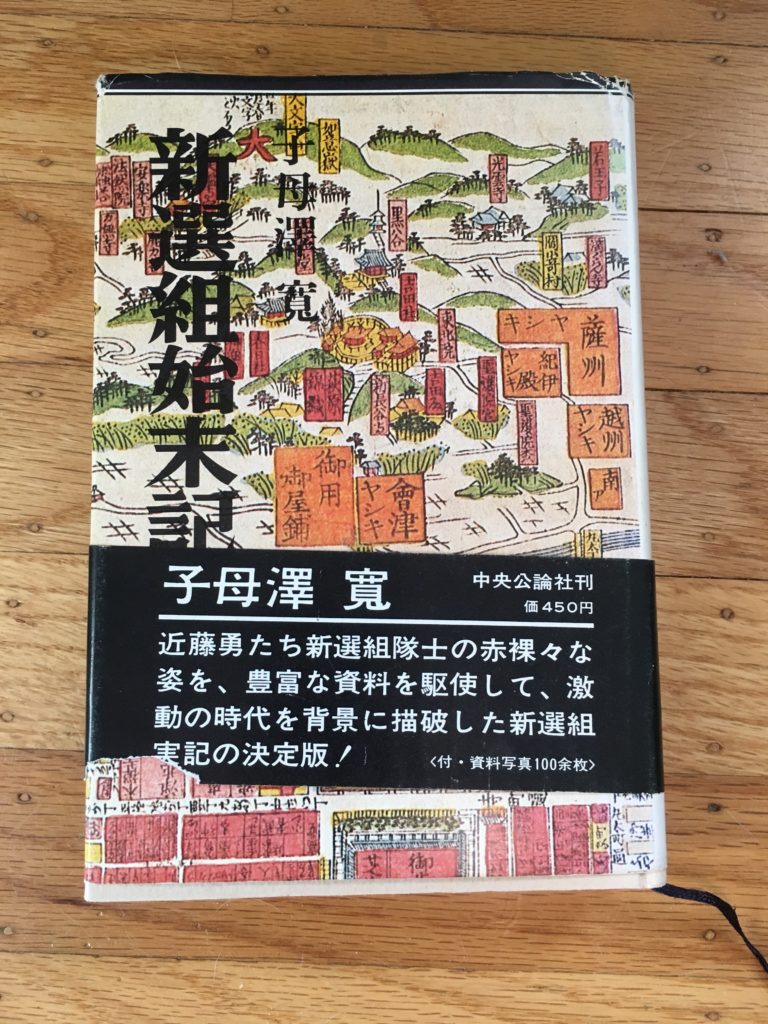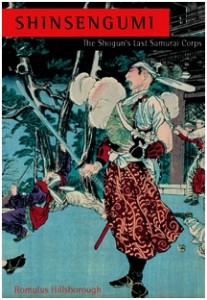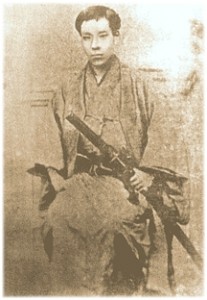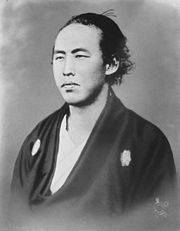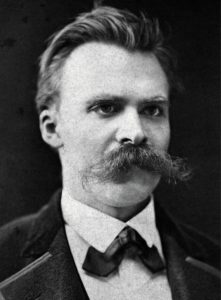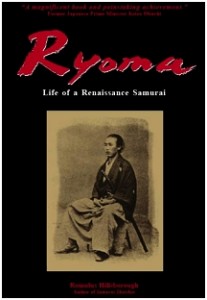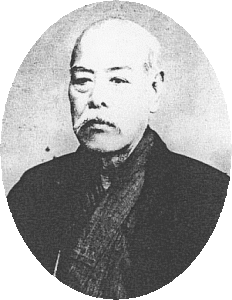As a writer of Bakumatsu history, two of the most important books I own are Sakamoto Ryōma Zenshū (坂本龍馬全集) (Kōfūsha Shuppan, 1978) and Nakaoka Shintarō Zenshū (中岡慎太郎全集) (Keisō Shobō, 1991), collections of letters to and from their respective subjects, and other related documents, compiled and meticulously annotated by Miyaji Saichiro (宮地佐一郎). I have relied heavily on Sakamoto Ryōma Zenshū in all my own books. It includes a lengthy document entitled “Sakamoto to Nakaoka no Shi” (坂本と中岡の死) (“The Deaths of Sakamoto and Nakaoka”), one of my main sources for “The Assassination of Sakamoto Ryōma,” the title of Part III of my forthcoming Samurai Assassins.
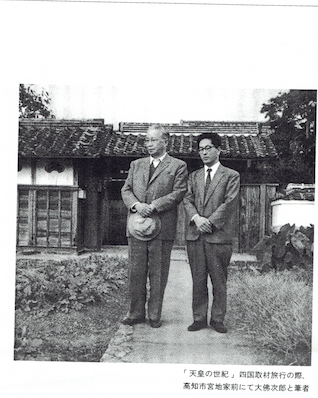
[This photo, published in “Ryōma Times,” No. 41 (newsletter of Tokyo Ryoma-kai), shows Miyaji Saichiro (right) on a trip to Kochi in 1968, with his mentor, the famous writer Osaragi Jirō, who at the time was working on Tennō no Seiki (天皇の世紀), his masterpiece of Bakumatsu-Meiji Restoration history.]
I first met Miyaji-sensei around November 1988, while working as a writer for Flash, a weekly magazine in Tokyo. The magazine was doing a special feature on Sakamoto Ryōma to commemorate his upcoming birthday. Since I was working on my novel about Ryōma at the time, the editor in charge asked me to accompany him to Miyaji-sensei’s home to interview him. Needless to say, I was thrilled to meet the great writer, whose books I depended on heavily in writing my novel.
Miyaji-sensei, born in Ryōma’s native Kochi, lived in Mitaka, Tokyo. He greeted us at the front door of his home, dressed in traditional kimono. During our visit I remember him saying something to the effect that he thought of me as an “American Ryōma.”
Years later, in December 1999, Miyaji-sensei gave me this copy of Nakaoka Shintarō Zenshū. He included this signed “complements from the author” slip, inscribed to me.
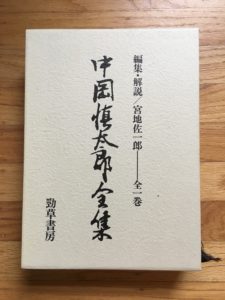
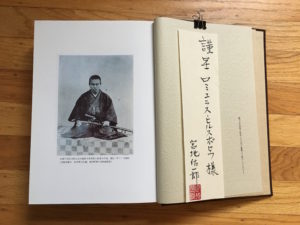
Related articles:
“Now is the time to reread Ryoma’s letters.” Miyaji Saichiro
“The Ryoma Phenomenon” – 龍馬現象 (11): My Five Favorite Books About Ryoma

